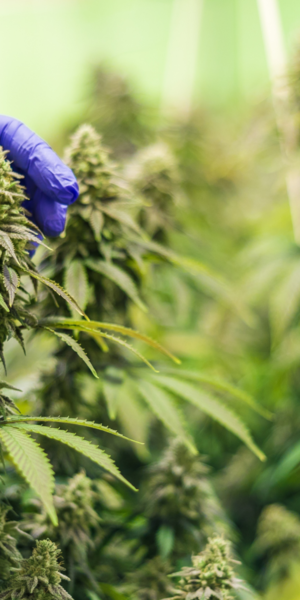Trump’s Tariffs, Social Program Cuts, and the Future of the Cannabis Industry
NEW YORK- Economic policy doesn’t just influence government budgets—it reshapes entire industries. For the U.S. cannabis sector, still federally illegal and structurally fragmented, proposed tariffs and social program cuts under a second Trump administration could have far-reaching consequences. While some businesses may struggle under rising costs and constrained consumer demand, others could thrive—if they’re positioned correctly.
Two major policy shifts could transform the cannabis landscape:
-
New tariffs on imports from China, Canada, and Mexico, driving up costs for essential goods.
-
Potential cuts to Medicare, Medicaid, and Social Security, reducing disposable income for millions of Americans—many of whom rely on cannabis for medical relief.
But not all cannabis businesses will be equally affected. Some, particularly those that are lean, locally sourced, and strategically positioned, may even gain competitive advantage.
The Tariff Squeeze: Equipment, Packaging & Vape Hardware
The new round of tariffs—ranging from 20–25%—targets imports critical to cannabis operations, including lighting systems, packaging, and vape hardware. While cannabis flower and finished products aren’t traded across borders due to federal prohibition, the industry is still deeply tied to global supply chains.
Key areas of exposure include:
-
Cultivation Equipment: Indoor growers rely heavily on imported LED lights, HVAC systems, and hydroponic components. These costs are set to rise significantly under new tariffs.
-
Packaging & Compliance Materials: Many states mandate child-resistant and state-specific compliant packaging, much of which is currently sourced from China and Canada.
-
Vape Hardware: A large share of the hardware for vape pens, cartridges, and batteries comes from China, making this sub-sector especially vulnerable to tariff-induced cost increases.
However, the impact of tariffs is not evenly distributed across the industry. Some operators remain insulated from global price shocks by virtue of their business models.
“We source all of our packaging from American-based companies,” said Scott Vasterling, CEO of Humboldt Family Farms. “And because our farmers grow outdoors, we don’t rely on expensive lighting or imported equipment.”
This model—small-scale, outdoor, and locally sourced—may prove to be a buffer against macroeconomic disruptions, reinforcing the value of regional supply chains in an uncertain global trade environment.
When Tariffs Meet 280E: The Double Bind
Cannabis businesses already operate under financial strain due to Section 280E of the federal tax code, which prohibits standard business deductions. This means every new cost increase—like those from tariffs—hits harder than it would in other industries.
While Multi-State Operators (MSOs) may have the scale to absorb these costs, small and mid-sized businesses could find themselves priced out. Tariffs don’t exist in a vacuum. When layered on top of 280E’s punitive taxation, they create compound pressure that further entrenches market inequality.
Social Program Cuts: A Blow to the Medical Cannabis Market
Trump’s proposals to cut Medicare, Medicaid, and Social Security could significantly reduce purchasing power for millions of Americans. This is particularly troubling for the medical cannabis market, where patients already face out-of-pocket expenses without insurance coverage.
The implications are serious:
-
Medicaid & Medicare Cuts: Seniors and low-income patients who rely on these programs for traditional healthcare may be less able to afford cannabis as an alternative treatment.
-
Social Security Reductions: Fixed-income seniors using cannabis for pain relief, sleep, or chronic conditions may reduce consumption—or turn to the illicit market—if benefits are cut.
-
No Insurance Coverage: Cannabis remains ineligible for reimbursement, unlike prescription drugs. Without support from government programs, patients are entirely exposed to price fluctuations.
In short, these proposed cuts could shrink the legal medical cannabis consumer base and inadvertently drive more demand toward unregulated sources, posing both a market and public health risk.
A Counter-Cyclical Industry in the Making?
Despite these headwinds, cannabis has shown signs of being recession-resistant. Like alcohol and tobacco during the Great Depression, cannabis provides both escapism and relief. During the COVID-19 pandemic—a period marked by economic uncertainty—legal cannabis sales soared. Consumers turned to cannabis for both medical and recreational purposes, suggesting that demand may not decline during downturns, but rather shift.
This counter-cyclical trend positions cannabis as a potential safe haven in future recessions. However, long-term success will require agility and smart market positioning.
The Power of Advertising in a Downturn
One of the clearest lessons from past recessions is that businesses that maintain or increase advertising during downturns outperform their peers. Historical examples abound:
-
Procter & Gamble dominated the consumer goods space during the Great Depression by doubling down on advertising.
-
McDonald’s and Amazon grew market share during the 2008 recession by investing in brand visibility while competitors went quiet.
Cannabis businesses would do well to follow suit. While many competitors may scale back in uncertain times, brands that continue to tell their stories and engage consumers will build loyalty and capture market share.
Strategic advertising is no longer optional—it’s a competitive edge.
As the cannabis market tightens, digital platforms like LinkedIn, targeted SEO, and content marketing can help brands reach both investors and consumers more efficiently than ever before.
A Word on Accountability: Cuts That Undermine the Working Class
Ironically, the proposed cuts to SNAP, Medicare, and Social Security could hit Trump’s own base hardest—particularly in rural areas where government assistance is often a lifeline. For years, large employers like Walmart have relied on these programs to subsidize low wages and healthcare.
If these safety nets are removed, companies may be forced to offer better wages and benefits to retain workers, especially in economically fragile regions. This could inadvertently lead to wage growth, as corporations scramble to fill the gap once held by government support.
But the path to that outcome will be painful. Millions of Americans may suffer in the short term before structural changes take hold. Cannabis companies that align themselves with community needs—through compassionate care programs, local hiring, or senior discounts—can differentiate their brands while serving the public good.
Final Thoughts: Cannabis at a Crossroads
The cannabis industry is no stranger to adversity. From regulatory hurdles to banking restrictions, it has adapted and evolved. Now, with new tariffs and social program cuts potentially reshaping the consumer landscape, the next phase of adaptation will be critical.
There will be winners and losers. Those who localize supply chains, streamline operations, invest in advertising, and prioritize consumer affordability will be best positioned to weather the storm.
The cannabis industry will survive and evolve—just as alcohol and tobacco did before it. The question is: Will your brand be one of the survivors?



































